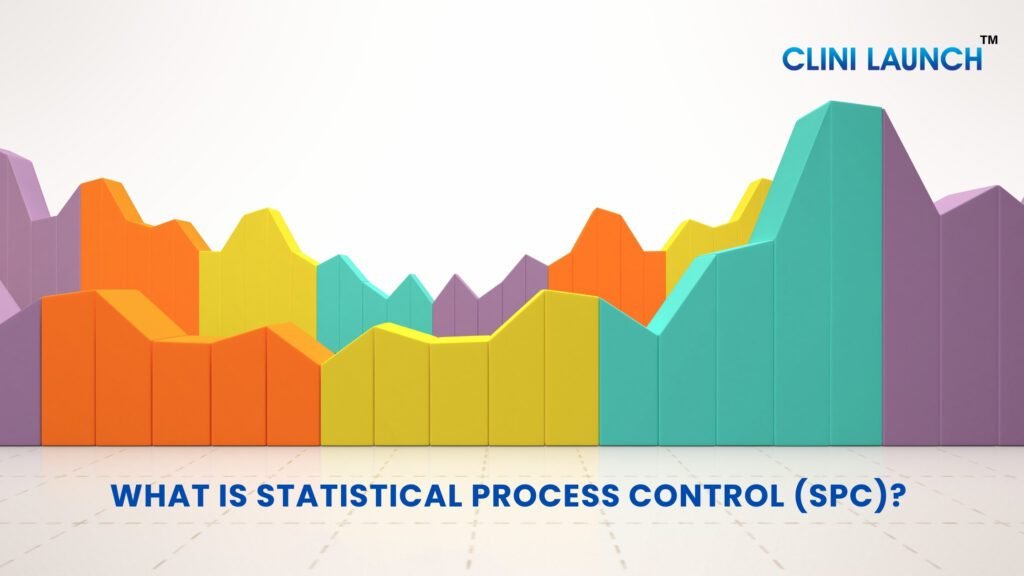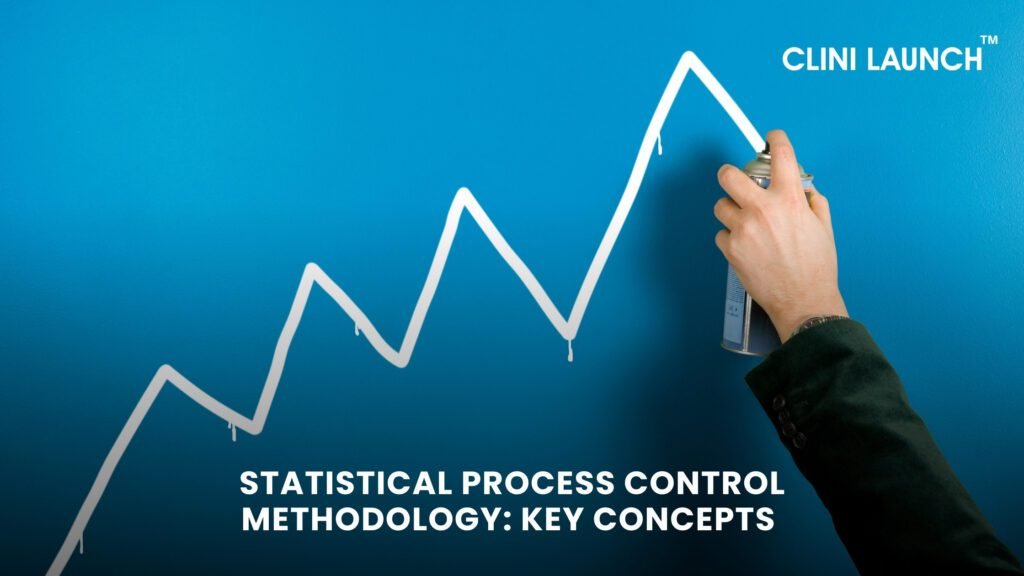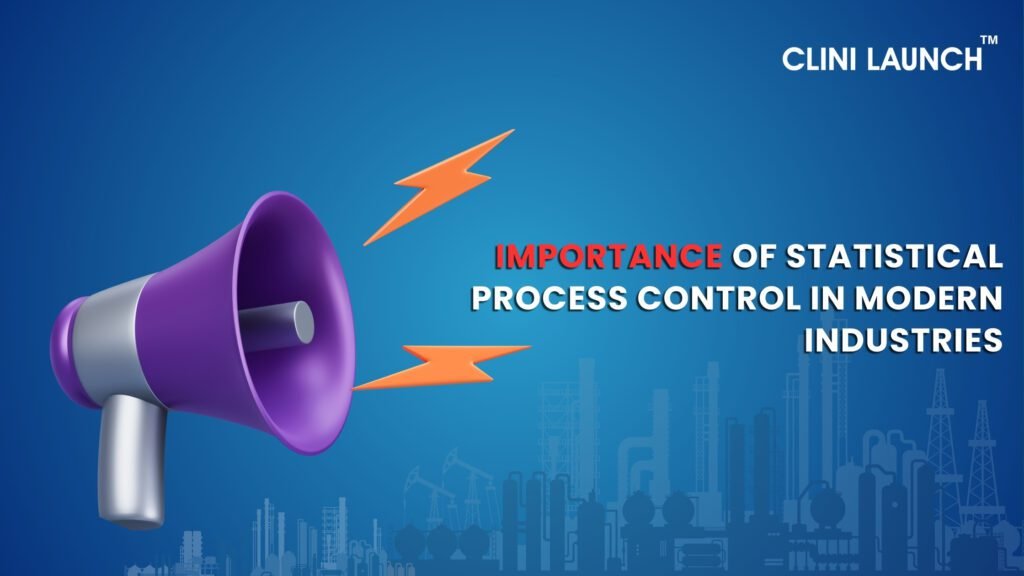Introduction
Statistical Process Control (SPC) is a data-driven quality control methodology widely used in industries such as manufacturing, healthcare, and service operations. By using statistical techniques to monitor and regulate processes, SPC allows organizations to maintain quality and make improvements based on real-time data.
In this blog, we will explore the methodological background of SPC, its historical development, tools, and the benefits it offers for process control. We will also touch on how statistical process control certification and the application of statistical methods contribute to its effectiveness.
What is Statistical Process Control (SPC)?

Statistical Process Control (SPC) is the use of statistical techniques to control a process or production method by monitoring data trends and identifying variations. Statistical Process Control helps businesses ensure product consistency and quality while detecting any issues that are happening early in the production process.
In practical terms, SPC works by collecting and analyzing data at various stages of production. The data is then plotted on control charts to help visualize trends, deviations, or abnormalities that indicate potential issues. Corrective actions are implemented when special cause variations are identified, ensuring the process is brought back under control.
Enroll For: Biostatistics Course
Historical Background of SPC
The origins of SPC can be traced back to the 1920s when Walter A. Shewhart developed methods to distinguish between common cause and special cause variations. Shewhart introduced the concept of control charts, which have since become a fundamental tool in SPC. In 1924, Doctor Walter Shewhart founded the first statistical charts from Bell Telephone Laboratories in order to control production process
During World War II, SPC played a critical role in ensuring the quality of munitions for the U.S. military. Post-war, SPC gained global recognition when W. Edwards Deming introduced it to Japan, leading to the rise of lean manufacturing practices at companies like Toyota. Today, SPC is a cornerstone of quality management systems worldwide.
Statistical Process Control Methodology: Key Concepts

The methodological foundation of SPC is built upon several key concepts:
- Variation Types:
Common Cause Variation: Inherent to the process and considered normal.
Special Cause Variation: Unusual and identifiable issues that need correction. - Control Charts: Control charts are graphical tools that plot data points over time against statistically calculated upper and lower control limits. They help identify data points that deviate significantly from the expected range, signaling potential problems.
- Data Collection and Sampling:
Data is collected at regular intervals to monitor critical process variables. Sampling is often used to avoid the cost and time of inspecting every unit. - Statistical Analysis:
Statistical techniques are applied to analyze data and determine whether the process is within the expected variation ranges. This analysis provides insights into decision-making. - Process Adjustment:
When special cause variations are detected, corrective actions are taken to address the root cause and bring the process back into control.
Read our Blog post on: Emerging Trends and Techniques in Structural Bioinformatics| 2025
How to Implement Statistical Process Control
Implementing SPC involves several steps that ensure effective monitoring and quality improvement:
- Identify Key Process Variables: Determine the critical factors that impact product or service quality.
- Collect Baseline Data: Before making any changes, collect baseline data to understand the current state of the process.
- Create Control Charts: Plot the data on control charts to visualize trends and identify any existing issues.
- Monitor and Analyze: Continuously monitor the process using control charts to track variations.
- Take Corrective Actions: If a special cause variation is detected, investigate the root cause and take corrective actions to stabilize the process.
- Evaluate Improvements: Use SPC charts to measure the impact of any changes and determine whether improvements are sustainable.
Benefits of SPC
The application of statistical methods in SPC provides numerous benefits, including:
- Waste Reduction: Early detection of process issues reduces defects and waste.
- Improved Quality Control: SPC ensures consistent quality and identifies potential problems before they escalate.
- Data-Driven Decisions: Decisions are based on real-time data rather than guesswork.
- Predictive Capability: SPC charts help predict outcomes and monitor whether improvements are sustainable.
SPC Charts and Tools
There are seven quality control tools commonly used in SPC, each providing unique insights:
- Check Sheet: A simple data recording tool to collect and organize data.
- Ishikawa (Fishbone) Diagram: Helps identify root causes of process issues.
- Control Chart: Plots process data over time to monitor variations.
- Histogram: Displays the frequency distribution of data.
- Pareto Chart: Identifies the most significant factors contributing to process issues.
- Scatter Diagram: Shows relationships between two variables.
- Stratification: Separates data into categories to identify patterns.
Read our blog post on: Global Clinical Trials: Unveiling India’s Booming Market Outlook for 2025!
When to Use Statistical Process Control
SPC should be used throughout the life cycle of a quality improvement (QI) project. It helps establish baselines, monitor progress, and evaluate the sustainability of improvements. Ideally, SPC should be implemented before making any changes to identify existing issues and provide a clear benchmark for measuring improvements.
Software solutions like Life QI can simplify the process by automatically detecting special cause variations and visualizing SPC charts. This automation helps quality improvement teams save time and ensures accurate monitoring.
SPC Certification and Career Growth
Professionals seeking to advance their careers in quality management can pursue statistical process control certification. These certifications validate an individual’s expertise in SPC methods and enhance their career prospects in industries like manufacturing, healthcare, and supply chain management.
Enroll for: Biostatistics course
Importance of Statistical Process Control in Modern Industries

SPC is crucial in today’s competitive industries for its ability to:
- dentify and Eliminate Defects: SPC enables organizations to detect variations early, preventing defects before they occur.
- Support Lean Manufacturing: SPC plays a pivotal role in lean manufacturing by ensuring processes are stable and efficient.
- Enable Automation: The quantitative nature of SPC methods paves the way for automation in smart factories.
Conclusion
Statistical Process Control (SPC) is a powerful methodology that uses statistical techniques to control a process or production method. By leveraging control charts, data analysis, and corrective actions, SPC ensures consistent quality and continuous improvement. With its historical roots in the work of Walter A. Shewhart, SPC has become a cornerstone of modern quality management systems. Whether you are looking to improve process efficiency or advance your career through SPC certification, mastering the application of statistical methods is essential for success in today’s healthcare industry. Visit our website CliniLaunch to learn more about statistical process control methodologies and biostatistics tools.
Frequently Asked Questions:
What is statistical control in statistics?
Statistical control in statistics is a term that refers to the process of monitoring and controlling variation in a process. It can be done using a variety of methods, including control charts. A company may use a control chart to determine if the variation is statistically significant.
What is an example of statistical control?
Statistical control is a process that is within an acceptable level of statistical variation. An example of a statistical control would be a manufacturing process that produces products with a weight that is within an acceptable range or variation.
What is the main goal of SPC?
To maintain a process within predictable limits by identifying and addressing variations that could lead to defective products, ultimately improving product quality and consistency.
What is the difference between “common cause variation” and “special cause variation”?
Common cause variation is natural, inherent variation within a stable process, while special cause variation indicates an identifiable problem or issue that needs to be addressed
How does SPC relate to quality control in manufacturing?
By using statistical process control, manufacturers can move from a detection approach to a prevention approach, reducing or eliminating the need to rely on sorting or inspection. SPC can increase productivity, reduce waste, and reduce the risk of shipping nonconforming products.
What are the 7 Quality Control Tools?
In 1974, Dr. Kaoru Ishikawa brought together a collection of process improvement tools in his text Guide to Quality Control. Here are the 7 QCT: Cause-and-effect diagram (also called Ishikawa diagram or fishbone diagram), Check sheet, Control chart, Histogram, Pareto chart, Scatter diagram, Stratification






I’m so grateful for your blog and the positivity it brings to my life. This post was filled with practical advice and a positive outlook that really resonated with me. It’s rare to find content that is both informative and uplifting, and you consistently deliver on both fronts. Keep up the amazing work!
I have bookmarked your blog and refer back to it whenever I need a dose of positivity and inspiration Your words have a way of brightening up my day
Thank you for always being open and honest with your readers It’s refreshing to see a blogger who is unafraid to be vulnerable and real
Your words have resonated with us and we can’t wait to read more of your amazing content. Thank you for sharing your expertise and passion with the world.
Your positivity and enthusiasm are infectious I can’t help but feel uplifted and motivated after reading your posts
I have been struggling with this issue for a while and your post has provided me with much-needed guidance and clarity Thank you so much
This blog post is packed with great content!
As a fellow blogger, I can appreciate the time and effort that goes into creating well-crafted posts You are doing an amazing job
As a fellow blogger, I can appreciate the time and effort that goes into creating well-crafted posts You are doing an amazing job
From the bottom of my heart, thank you for being a source of positivity and light in this sometimes dark and overwhelming world
Wow, this blogger is seriously impressive!
This is such an important reminder and one that I needed to hear today Thank you for always providing timely and relevant content
A well-structured guide to mastering Statistical Process Control! Understanding the methodological background is crucial for ensuring quality and efficiency in any process. Thanks for sharing such valuable insights
This post truly brightened my day! I appreciate how you delve into the topic with such positivity and clarity. It’s refreshing to see content that not only informs but also uplifts the reader. Your writing style is engaging and always leaves me feeling inspired. Keep up the fantastic work!
This post truly brightened my day! I appreciate how you delve into the topic with such positivity and clarity. It’s refreshing to see content that not only informs but also uplifts the reader. Your writing style is engaging and always leaves me feeling inspired. Keep up the fantastic work!
Thank you so much.
Really appreciate you stopping by! So glad you found the blog helpful. Stay tuned for more insights!
Keep up the amazing work! Can’t wait to see what you have in store for us next.
hentairead Great information shared.. really enjoyed reading this post thank you author for sharing this post .. appreciated
Thank you, Glad you find our blogs helpful. stay tune for more such informative blogs!
Thank you so much, happy to deliver such informative blogs. Stay tuned!